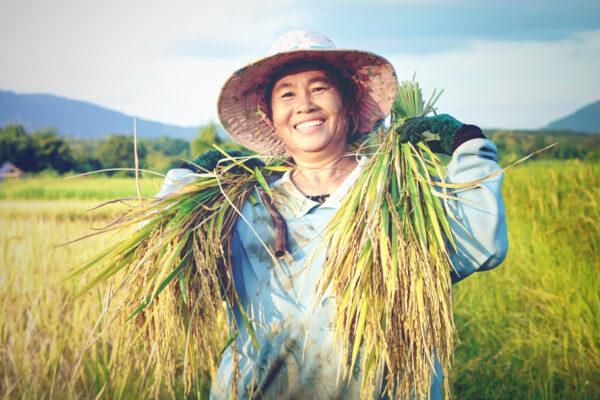Thailand, renowned as the “Rice Bowl of Asia,” has a deeply rooted history in rice farming, making it one of the most significant players in the global rice market. With a mix of tradition, innovation, and sustainability, Thailand continues to stand out as a leading exporter of premium-quality rice varieties.
1. The Backbone of Thailand’s Economy
Rice is not just a staple food in Thailand; it is a cornerstone of the economy. The country has long been one of the largest exporters of rice, contributing significantly to its GDP. The export market thrives on high-quality varieties such as Thai Hom Mali (jasmine rice), which commands premium prices globally due to its distinctive aroma and texture.
2. Thailand’s Diverse Rice Varieties
Thailand’s rice market is versatile, catering to different consumer preferences:
- Thai Hom Mali (Jasmine Rice): Known for its fragrance and softness, it dominates exports to markets like the USA, Europe, and China.
- Glutinous Rice (Sticky Rice): A staple in Northern and Northeastern Thailand, ideal for traditional Thai dishes.
- Parboiled Rice: Highly demanded in African and Middle Eastern markets.
- White Rice: Widely consumed domestically and internationally for its versatility.

3. Factors Shaping the Market
Sustainability and Organic Farming
The global shift towards environmentally friendly practices has pushed Thai farmers to adopt sustainable methods. Organic rice farming is growing, with provinces like Yasothon leading the way.
Government Support
The Thai government actively supports the rice sector through subsidies, price guarantees, and R&D investments, ensuring farmers’ welfare and enhancing export capabilities.
Export Challenges and Competition
Thailand faces competition from countries like India and Vietnam, which offer lower-priced alternatives. However, Thai rice holds its ground due to its superior quality.
4. Climate and Its Impact on Production
Thailand’s rice production is highly dependent on favorable weather conditions. Droughts and floods, exacerbated by climate change, pose challenges to consistent yields. Farmers are adopting water-efficient practices and resilient crop varieties to mitigate risks.
5. The Role of TAT GLOBAL CO., LTD
As a prominent player in Thailand’s agricultural market, TAT GLOBAL CO., LTD takes pride in its contributions to the rice industry.
- Quality Assurance: Rigorous quality checks ensure only the best rice reaches global clients.
- Sustainability Focus: We collaborate with farmers to promote eco-friendly practices.
- Global Reach: With branches in the Philippines, Kenya, and Tanzania, we efficiently distribute rice to international markets.
- Customized Solutions: Tailoring rice types and packaging to meet specific client needs.

6. The Future of Thailand’s Rice Market
The Thai rice market holds significant potential for growth by focusing on:
- Innovation: Embracing advanced farming techniques like precision agriculture.
- Sustainability: Expanding organic farming to meet global demand.
- Market Expansion: Exploring new markets in Africa, the Middle East, and South Asia.
Conclusion
Thailand’s rice market thrives as a symbol of quality and tradition. It remains a powerhouse in the agricultural sector with strategic efforts to adapt to global trends and challenges.
At TAT GLOBAL CO., LTD, we are proud to be a part of this journey, supplying the world with premium Thai rice that embodies excellence and sustainability. Contact us today to learn more about our offerings or collaborate on your next shipment!

